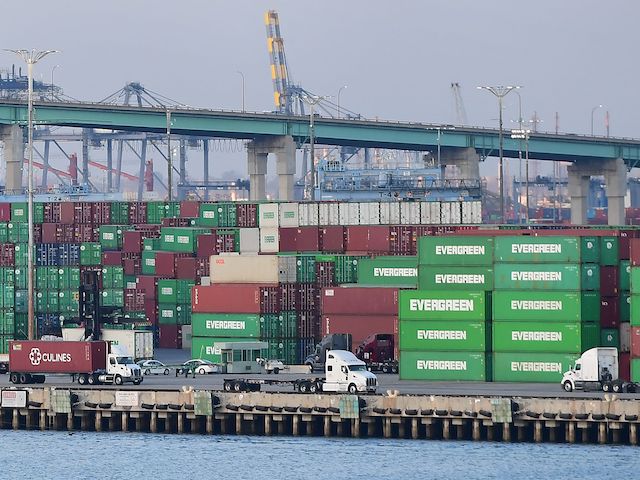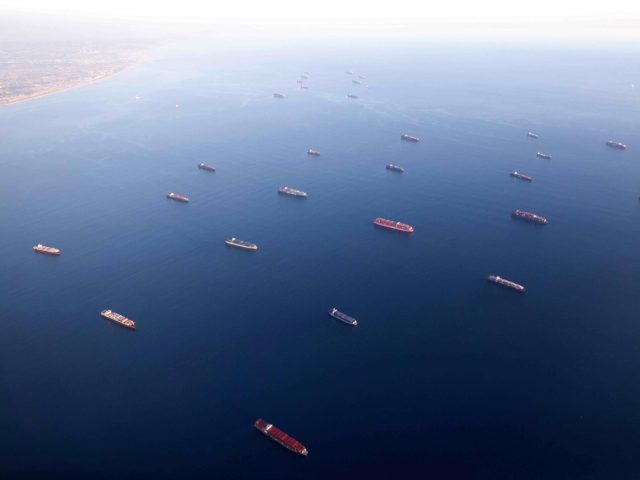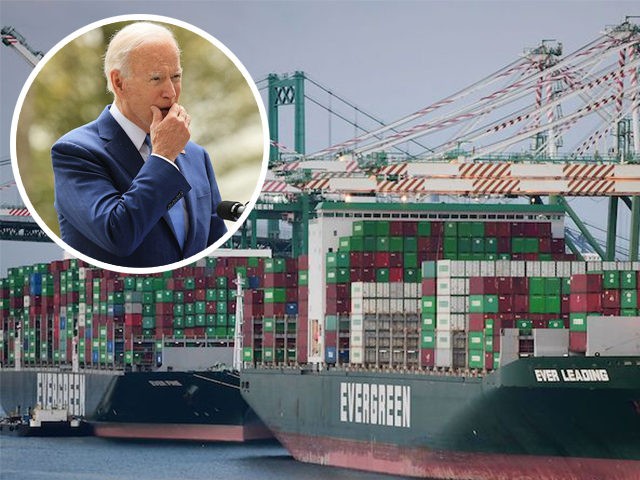President Biden last week announced plans to increase the capacity of the Port of Los Angeles by extending its hours. So far, it is not working.
Biden announced on Wednesday of last week that the Port of Los Angeles has agreed to go to 24/7 operations. Essentially, this would mean allowing cargo owners to pick up goods between 3 a.m. and 8 a.m.
“This is the first key step to moving our entire freight transportation and logistical supply chain nationwide to a 24/7 system,” Biden said.
He added that it could be a “game changer.”
After a week, the game is largely the same. There are a record number of container ships in the waters near the Port of LA and the Port of Long Beach, which together handle 40 percent of container traffic coming into the U.S. The Port of Long Beach opened itself up to similar nighttime and weekend shifts a few weeks ago.
The problem is that there have been no requests from cargo owners to use the red-eye shift at the Port of L.A., according to a person familiar with the operations of the port. It’s not clear if Long Beach has seen a pickup in demand for loading trucks during the 3 am. to 8 a.m. time slot.
A spokesman for the Port of L.A. said the ports operator has opened the gates and the terminals were willing to add the five hours to operate 24.7. The White House says members of the International Longshore and Warehouse Union have said they are willing to work extra shifts.
So what’s the hold up?
Analysts who have looked into the supply chain problem say it is not the hours of operation at the ports that is the major hold up. Instead, the constraints are shortages of truck drivers and warehouse employees. These were in short supply during regular hours and are extremely difficult to put in place for a 3 a.m. shift. And there is a shortage of truck chassis themselves.

Containers stacked high are seen at the Port of Los Angeles on September 28, 2021, in Los Angeles, California. (Frederic J. Brown/AFP via Getty Images)
On average at the two ports, freight waits five to six days to be picked up once off the ship. That’s twice the normal average of two and a half days. And that is on top of the average anchor time of 12 days, also about twice as long as ships typically waited. What’s more, there are reported loading delays at ports in Asia and production delays at factories in China due to electricity shortages.
This means the supply chain delays are likely to persist deep into next year, according to some analysts.

In an aerial view, container ships are anchored by the ports of Long Beach and Los Angeles as they wait to offload on September 20, 2021 near Los Angeles, California. Amid a record-high demand for imported goods and a shortage of shipping containers and truckers, the twin ports are currently seeing unprecedented congestion. On September 17, there were a record total of 147 ships, 95 of which were container ships, in the twin ports, which move about 40 percent of all cargo containers entering the U.S. (Photo by Mario Tama/Getty Images)
“Despite a sense of optimism observed after President Biden’s announcement to allow 24/7 operation of the port of Los Angeles (LA), the logistics constraints are expected to persist well into [the second half of 2022],” alternative energy analysts at Bank of America wrote in a client note on Wednesday.

COMMENTS
Please let us know if you're having issues with commenting.